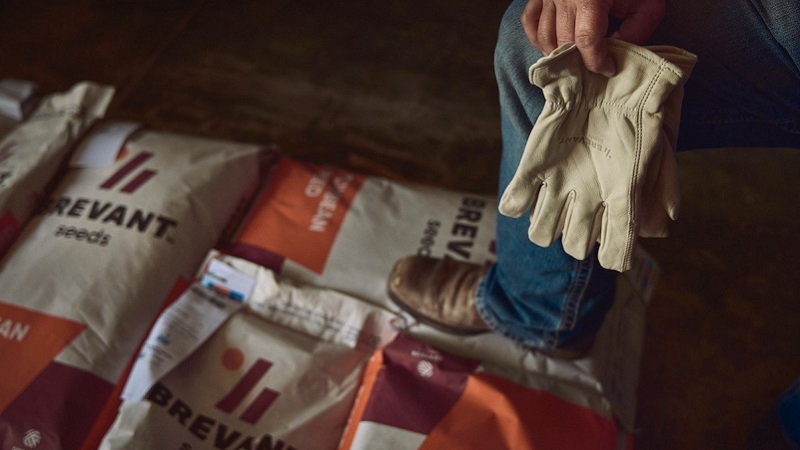Monsanto: Illegal, Improper Use at Root of Drift Problems
Monsanto isn’t backing down from the position that its tool — the Roundup Ready Xtend dicamba-tolerant system for soybeans and cotton — isn’t inherently flawed.
Robb Fraley, Monsanto Executive Vice President and Chief Technology Officer, told media on a conference call on Thurs., July 13, that on the vast majority of farms he has visited over the past three weeks where drift has been a problem, it was likely due to “not having adequate buffer separation differences, and spraying in wind conditions.”
Fraley pointed out several instances in Arkansas and Missouri where he saw cupping that could not have been from drift because of the pattern of impact.

Illegal use of older, generic dicamba formulations “could approach 25% of applications.” –Robb Fraley, Monsanto Chief Technology Officer
“Most agronomists will tell you that uniform, corner-to-corner leaf cupping across an entire field is not consistent with drift; it’s symptomatic of another problem. Are those uniform problems with cupping because of a problem with a contaminated sprayer unit? Are they due to improper spraying of older dicamba formulations that have a propensity to vaporize?”
He saw some LibertyLink soybean fields treated with various glufosinate herbicides that also displayed uniform symptoms. Based on spray boom patterns and aerial photographs, growers and consultants determined cupping resulted from some form of sprayer contamination, he said. Of 10 samples the company had collected so far, four were detected to contain low levels of dicamba.
Not only is user error assumed to be at the root of snowballing drift cases this season, Fraley also speculated that illegal use of older, generic dicamba formulations “could approach 25% of applications.”
“Many (farmers and consultants) noted that sales of these products spiked this year, despite the fact that corn and wheat acres were down,” Fraley said, which is significant, as older formulations of dicamba are primarily used on corn and wheat at this time of year. “The extent of off-label product use was surprising to me and very troubling, and it’s also illegal.”
Evidence that off-label formulations were commonly used, however, was not offered on the call.
He recognized that the vast majority of growers are “doing the right thing, but it’s clear that a few bad actors can make the situation worse for everyone.” Fraley, along with Lisa Safarian, Vice President of Monsanto North America, praised the Departments of Agriculture in Missouri and Tennessee for banning the use of older dicamba formulations and increasing the fines for off-label use.
“My experience is that in that first year for almost every technology, there are kinks that you need to work out. As we look at experiences we’ve gained this year on 25 million acres that the technology has been planted on, I think there are things we will be able to look at and continue to make suggestions and change recommendations as we go in to prepare for the 2018 planting season,” Fraley added.
Weed Scientists Sound a Different Note
Many weed scientists are sounding a different note on the situation from that of Monsanto and BASF, maker of the Engenia dicamba herbicide that has been the target of more than 600 drift complaints in Arkansas — more than all of the other states combined. The state banned the sale and use of the herbicide for at least 120 days as of July 11.
“The simple fact of the matter is if you have dicamba, it’s not a question of if you’re going to have drift, it’s what’s going to be the magnitude. It’s the exact same thing we’ve seen the last 50 years,” Aaron Hager, Extension Specialist, Weed Science/IPM with the University of Illinois Extension, said in an interview.
In Hager’s home state of Illinois, he has seen more issues with drift than in the last 20 years combined, despite the fact that the state’s Department of Agriculture has registered just 31 drift complaints thus far, and said this week there are no plans to ban the herbicide. “The problem with going off official complaints is it doesn’t always estimate reality,” Hager told CropLife.
“To say we have less a problem (than other states) is not an accurate statement … These (new) formulations are volatile. I defy anyone to contest that,” he said, adding that cupping on soybeans can be caused by as little as 1/20,000 of the standard dicamba use rate per acre.
Hager also disagreed that predictions about yield impact on soybean fields showing symptoms could be determined with any accuracy.
Andrew Thostenson, Pesticide Program Specialist with the North Dakota State University Extension Service, said that as a pesticide educator, it is tough for him to see the issues growers are having in the Southern states.
“When you see those number of complaints down there, something is not working. It just gives me a lot of pause,” he said.
“We’ve got to be able to put products out amongst others without hurting (non-Xtend crops). I’m a big believer that a guy should be able to grow whatever he wants on his land, and he shouldn’t have to plant any one company’s type of bean just in self defense to prevent injury,” Bob Scott, Professor and Weed Scientist at the University of Arkansas Cooperative Extension Service, said.
On the call, Fraley brought up the launch of Roundup Ready in 1996, when there were “mixed views by some weed scientists on the adoption of Roundup Ready technology itself.” He added: “The enemy here isn’t new technology; the enemy here is challenging weeds – pigweed and waterhemp that are very difficult for farmers to control, and I think everyone realizes that we need new tools to address these problems.”






